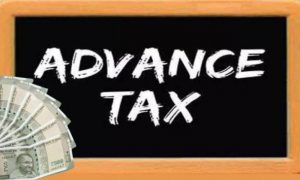As the financial year concludes in March, the race to file tax returns intensifies among individuals aiming to meet the deadline. For salaried employees, Form 16 is a critical document issued by employers, outlining taxable income and the deducted Tax Deducted at Source (TDS). However, circumstances may arise where obtaining Form 16 becomes challenging, but fear not – filing taxes accurately is still achievable with the following steps.
Read More: Income Tax Return: How To File Online Tax? Step-by-Step Guide
Unraveling the Importance of Form 16
Form 16 serves as a certificate detailing the TDS deducted and deposited by employers, facilitating the estimation of correct tax liability. According to The Times of India report, its absence does not impede the filing process; alternatives can be explored to ensure accurate tax return submissions.
Filing Income Tax without Form 16: A Step-by-Step Guide
Step 1 – Accumulate Payslips
Begin the process by collecting all payslips, as they provide insights into your taxable income. The report added that while Form 16 delineates this information, payslips serve as a suitable substitute.
Step 2 – Leverage Form 26AS
Refer to Form 26AS, an annual statement displaying tax-related information, including TDS deducted from various income sources. By cross-referencing payslips with Form 26AS, you can determine the TDS already deducted by your employer.
Read More: Gold prices down by ₹270, silver declines by ₹3 on January 4: Check city-wise rates
Step 3 – Compute and Claim Deductions
Identify and claim deductions applicable to your salary income. These may include House Rent Allowance, reimbursements, and Section 80C deductions on investments. Such deductions lower taxable income.
Step 4 – Add Income from Other Sources
In addition to salary income, consider income from alternative sources like interest from savings accounts, fixed deposits, gains from shares and mutual funds, rent income, and capital gains. Summing up these incomes helps determine overall taxable income.
Step 5 – Identify the Appropriate Tax Form
Determine the relevant tax form for your filing requirements. For salaried employees, options include ITR 1, ITR 2, ITR 2A, Form 3, Form 4, and Form 4A. Depending on your financial situation, select the form that aligns with your income details.
Step 6 – Compute Tax Liability
With the accumulated data, calculate your tax liability. Compare this figure with the TDS already deposited. If TDS surpasses the actual tax liability, a tax refund can be claimed. Conversely, if tax liability exceeds TDS deposited, additional tax payment is required.
Step 7 – File Your Return
Having filled the chosen tax form, submit it to complete the filing process and timely submission ensures compliance with tax regulations and avoids penalties.



































